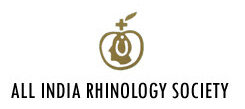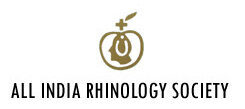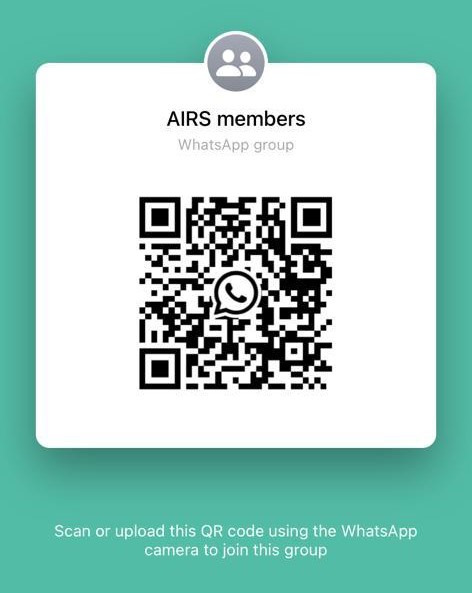Journal
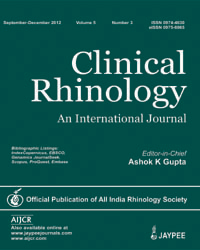
Clinical Rhinology Journal
OFFICIAL PUBLICATION OF ALL INDIA RHINOLOGY SOCIETY Volume 1, Number 1, September 2008
Chief Editor Chairman Editorial Board Prof. Ashok K Gupta Dr. P.S. Saharia
Editorial Office: Room Number 25, Block D, Level 2, Faculty Office, Nehru Hospital Postgraduate Institute of Medical Education & Research, Chandigarh 160 012, India
Instructions to Author:
Clinical Rhinology publishes original articles on the clinical practice and basic science of otolaryngology. Authors are invited to submit papers that would be appropriates as feature articles, clinical or case reports, commentaries or letter to the editor.
Editorial policies:
- Manuscripts will be critically reviewed by the Editor-in-Chief with members of the Editorial Board and other expert source. Revision may be required as a condition of acceptance.
- A manuscript is reviewed with the understanding that it is not under consideration by any other journal and that no part of the submission has appeared previously in any but abstract form.
- Transfer of copyright to Clinic Rhinology is a condition of publication. (See section below: “Copyright Agreement and Financial disclosure”)
- Manuscript should be neatly prepared and written in correct English. Any mention of previously published studies or data derived from them must be referenced. A search of the literatures should not exclude sources published before 1996 (pre-medline) if they are pertinent to the current manuscript.
Manuscript Preparation:
Copies: Submit one original hard copy and three photocopies of the manuscript along with computer diskette or CD. (See further details below regarding electronic submission). The text of manuscript should include a title page and references, figure legends and tables. Also include four (4) sets of original figures. Keep a complete set for your records.
Manuscript Format: Type manuscripts double spaced on white, 8-1/2 × 11” paper, with ample margins. Number pages consecutively and put a running head with the first author’s last name and an abbreviated title in the upper–right corner of each page.
Title Page: Include full title of the paper and the first and last names of each author, as well as his/her highest degree(s) attained. Only those who have made a substantial contribution to the manuscript (i.e., its conception, drafting, data analysis, major revisions) should be listed as authors. Recognitions for other contributions (i.e., funding, data collection, research group supervision, etc.) may be given in a brief “Acknowledgements” paragraph at the end of the text. Include at the bottom of the page the name and address of the institution(s) where the work of study was done; the author(s)’ affiliations; the name and address for reprint requests; source(s) of financial support or funding, if applicable; and, if the paper was presented at a meeting, the name of the society, city and the date.
Text: Use this suggested outline for the main body of the paper: Abstract, Introduction, Patients and Methods, Results, and Discussion. References, figure legends, and tables should follow the text.
References: These must be typed double-spaced and numbered consecutively in the order in which they are cited in the text. The author is responsible for the accuracy of references. Use Index Medicus for journal abbreviations. Refer to the American Medical Association Manual for style of correct reference formats.
Table: Type tables double-spaced, numbered consecutively beginning with number 1, and provide a title for each. Limit size of tables and use only when they contain information not in the text or figures. Make certain that data and information in tables (or figures) agree with data and information in the text.
Figure Legends: Provide a typed, double-spaced legend for each figure, numbered to match the figure number. For photomicrographic material, indicate stain and magnification or use and internal scale marker.
Figures: Send four complete sets of illustrations, one for each copy of the manuscript. These are required whether artwork is submitted electronically or not. (See “Electronic submission” below for further instructions.)
Suitable formats for photographs are slides or unmounted glossy prints. Line drawings and graphs should be professionally drawn, photographed, and sent as slides or glossy prints. No dot-matrix or laser printouts will be accepted. Please note: We cannot return slides or photographs.
Do not send original artwork.
Each figure must be identified on the back with the figure number, the first author’s last name, and an arrow pointing to the top.
Each set of figures must be in a sealed envelope labelled with first author’s last name and the title of the paper.
Do not use paper clips or staples.
Audiograms must be plotted according to ISO standards and must be in black and white.
Illustrations must be no larger than 5×7”.
Colour illustrations are encouraged, and authors will not be charged for colour. Authors may be charged for excessive numbers of illustrations.
Photographs of recognizable persons must be accompanied by a signed release from the patient or legal guardian that authorizes publication. Refer to patients by number. Real names or initials cannot be used in the text, tables or illustrations.
Permission must be obtained from the publisher of any illustrative material that has previously appeared in print.
Electronic Submission:
Text: Please include the file on a floppy disk or CD and send it along with the hard copies. Preferred file formats are Microsoft Word and Word Perfect.
Figure: Photographs, slides, and other graphic elements may also be submitted electronically, but copies of all illustrations (in the formats described above) must accompany them for distribution to the reviewers and for scanning should any problems occur with the electronic files.
Images sent electronically should be saved on a floppy disk or CD as either TIF or EPS files. Preferred resolution is 600dpi (minimum, 300dpi) at a physical image size of 5 inches wide. Do not submit thumbnail-size images, as enlarging them reduces their resolution below the acceptable limit.
You can submit the articles via email to clinrhinol@gmail.com
Copyright Agreement and Financial Disclosure
Every author whose name appears on a submitted manuscript must sign a Copyright ‘agreement and Financial Disclosure from before the manuscript will be considered complete. Obtain all required signatures and send the sighed form along with your submission.
Send submissions to:
Prof Ashok K Gupta
Room Number 25, Second Floor, D block
Faculty Offices
Nehru Hospital
PGIMER, Chandigarh.
Note: The corresponding author is responsible to notify the Editor-in-Chief if he or she moves or if any of his/her contact information changes after manuscript submissions. Manuscripts cannot be published if author(s) cannot be reached for queries and approval of the edited manuscript.
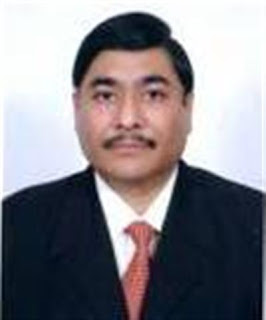
ABSTRACT
For majority of the rhinologists’ worldwide, the most important historic event in the field of rhinology would be when Hirschmann in 1901 used a modified Nitze cystoscope to inspect the maxillary sinus. This was not merely because it provided a means of direct visualization of the unknown interiors of the nose, because the concept of rhinoscopy dates back to the Egyptian physicians who used instruments to remove the brain through the nose, as part of the mummification process and in sixth century BC, when Indian physician Sushruta in his famous treatise ‘Sushruta-samhita’ described a tubular nasal speculum, made of Bamboo tree to inspect nasal cavities. The major boon in gave was that it paved way for the concept of functional endoscopic sinus surgery which revolutionized the concepts of understanding and treatment of sinus disease. The concepts later evolved from endoscopic sinus surgery to functional endoscopic sinus surgery to minimally invasive sinus surgery to biostatic endoscopic sinus surgery and what next. But this was not all. The endoscope opened the frontiers to a variety of procedures to approach area beyond the sinuses, which we collectively call the extended FESS.
